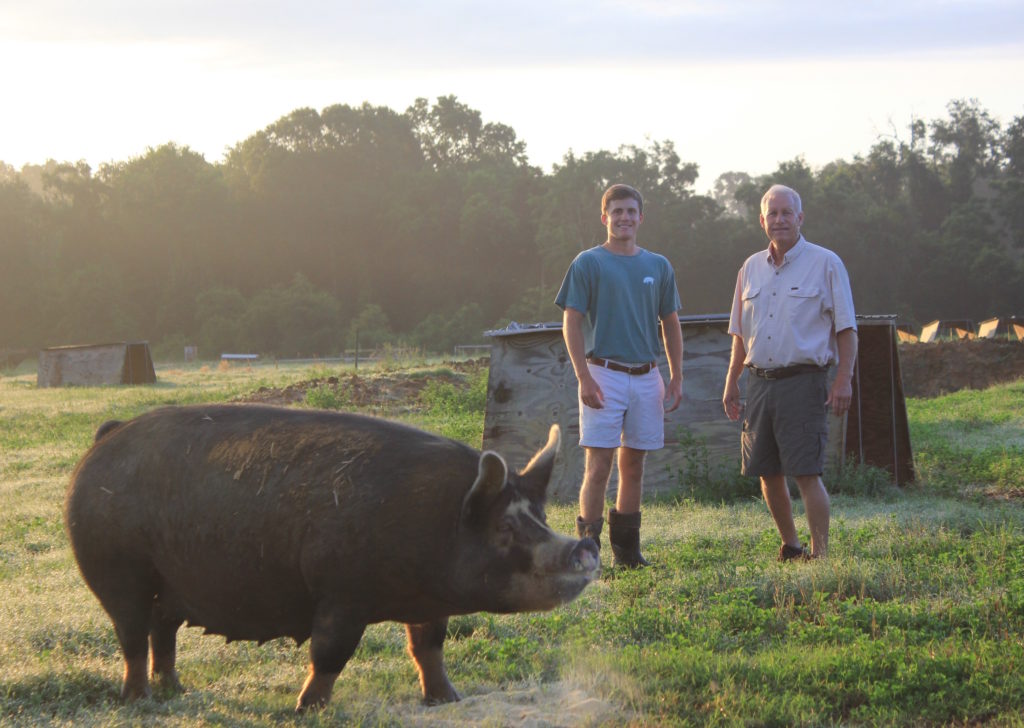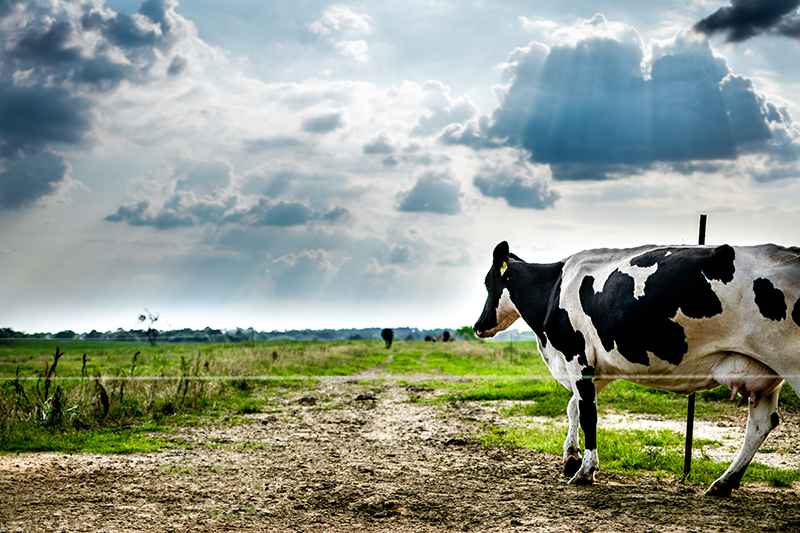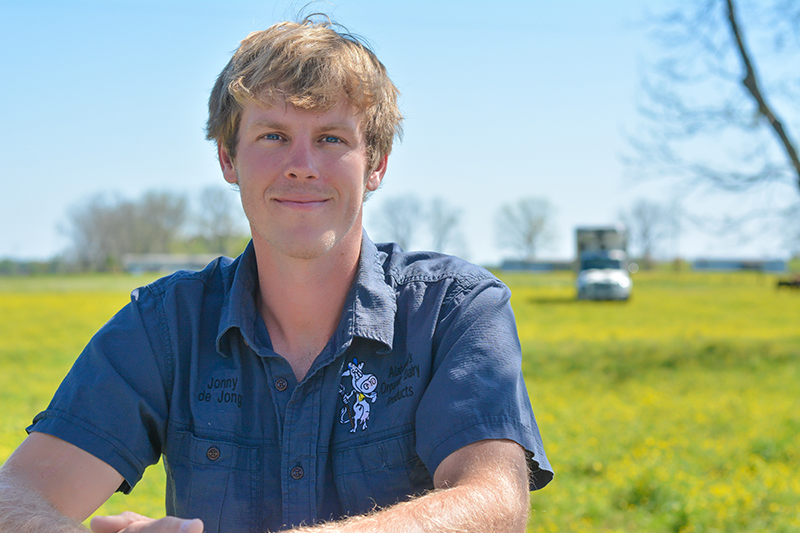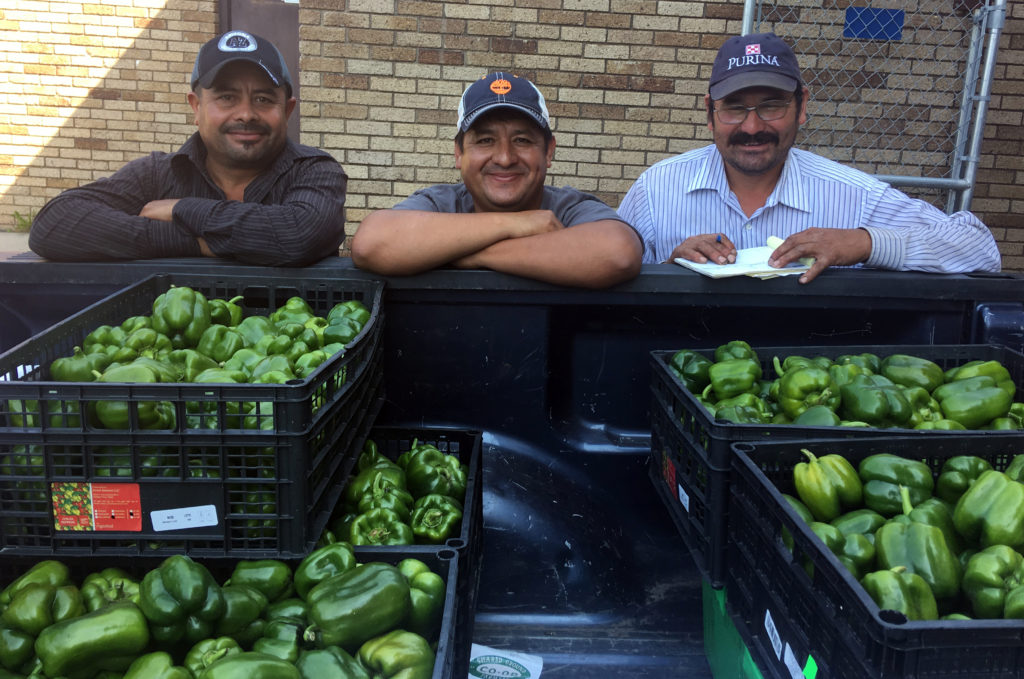
Editor’s Note: On December 11, 2019 USDA Rural Development announced the availability of at least $37 million and a 90 day application period for VAPG grants. Stay tuned, the National Sustainable Agriculture Coalition (NSAC) will publish more information, including its updated Farmers’ Guide to Applying for the Value-Added Producer Grant Program in the new year. The Guide is a free resource that walks farmers through the program’s application requirements, including a step-by-step description of the application and ranking processes.
What do a dairy farm in Alabama, a hog farm in Georgia, and a farmer-led cooperative in Minnesota have in common? A few things – they’re all farm operations, they all contribute to their local food economies, and in this case, all three have grown their operations through the Value Added Producer Grant (VAPG) program.
The term “value-added” gets thrown around a lot in the world
of food and agriculture, but what does it mean? Why is value-added agriculture important?
When farmers and entrepreneurs take raw agricultural products like vegetables,
grains, or dairy and transform them into minimally processed goods (e.g., sauces,
bread) and/or market them specially as “local” or “organic,” they are adding
value to their products. Farm-based valued-added food products can bring in
higher prices than the raw product alone, which helps farmers and ranchers
improve their bottom lines and contribute to community and rural economic
development through increased hiring and spending.
VAPG provides competitively awarded grants to independent agricultural
producers, producer-controlled entities, organizations representing
agricultural producers, and farmer or rancher cooperatives to develop
value-added, producer-owned businesses. These grants may be used to fund
business and marketing plans or to acquire working capital. The program has
helped thousands of farmers, ranchers, dairymen, and fishermen throughout the
country harness the entrepreneurial spirit essential to small businesses.
In fact, the Economic Research Service (ERS) published a report in 2018 showing that businesses that received VAPG grants were less likely to fail than similar businesses that did not receive support through the program. Moreover, on average, VAPG recipients provide more jobs for their communities than similar non-recipient businesses. This program is clearly vital to helping family farmers and ranchers diversify their operations, grow their businesses, and become less dependent on commodity markets.
In this post, we profile how VAPG enabled two farmers and one farmer-led cooperative to tap into local and regional markets, expand their customer bases, capture more of the consumer dollar, and ultimately grow their incomes.
Working Cows Dairy – Slocomb, AL

Many know Slocomb, AL as the “Home of the Tomato,” but others know that it’s also home to Working Cows Dairy – the only certified organic dairy operation in the entire region. Just 10 miles north of the Florida border, Jonny de Jong helps helps to manage a portion of the dairy operation his parents Jan and Rinske established when they emigrated from the Netherlands in 1985.
Working Cows Dairy is a producer and processor, which means that they handle every step in the production process from milking the cows to bringing the product to their customers. The operation is Certified Organic, Certified Grassfed, and Animal Welfare Approved. Working Cows Dairy supplies several different kinds of milk, cream, ice cream, and cheese to customers, grocery stores, and restaurants throughout the southeast. Maintaining a complex operation like this one is no simple matter, and comes with significant expenses.
Over the last several years, a combination of unstable markets, farm consolidation, and shifting consumer preferences have driven many small family farms – in particular family dairies – out of business. How then, has Working Cows Dairy managed to not only stay afloat, but to continue growing? One key reason has been the family’s receipt of a VAPG grant in 2016.
VAPG provided the de Jong family with a $245,000 Working Capital grant to expand their product lineup, develop product labels, conduct food safety training, hire additional staff, and broaden their distribution routes to reach more customers. The financial cushion from VAPG allowed them to implement fundamental projects that they otherwise would not have been able to fund.

“It was definitely a step up for us,” said Jonny. “It took us to another level in our operation – it got us up to the next step so we could keep climbing the stairs.”
VAPG allowed Working Cows Dairy to fund a number of important projects that helped them develop their business. Jonny also emphasized how much the expanded financial capacity that VAPG provided helped them to build their team and grow their success.
“A big part of going to the next step is having a good team that can help you succeed, that understands where you want to go, that enjoys the atmosphere you work in, and that wants to help you reach the next level and keep growing,” said Jonny. “That’s the key to being successful when creating a new business. Before the grant, we weren’t really in a position where we could have more folks come on board, and afterwards, we were. And we’ve only added employees and positions since then…and that’s what we need to do in order to keep moving forward.”
For more information on how VAPG helped Working Cows Dairy, check out this great video from the Agricultural Marketing Resource Center:
Thompson Farms – Dixie, GA

Two and a half hours east of Working Cows Dairy, Thompson Farms is raising heritage breed hogs on 200 acres of pasture in Dixie, GA. The Thompson family began their pastured pork operation in the early 2000s when “Grandaddy Raymond” decided that the pork from the grocery store just didn’t compare to what he raised and smoked as a kid. It is a true family operation, with Andrew’s son Bayly managing the animals, and his daughter Abby overseeing the sales and processing components. Abby recalls the difficulty the farm initially faced when they first opened the business. Smithfield had begun purchasing every slaughter center in the area, and the Thompsons were left with no one to process their pork.
“We were either going to have to get out of the pork business completely, or change up the game a little bit,” said Abby. “So that’s what we did. We decided to do everything ourselves. And that’s when we applied for the first grant.”
Thompson Farms has received two VAPG Working Capital grants since beginning their operation. In 2010, the family received a $300,000 VAPG grant, which they used to open their on-farm processing facility and control the product quality from start to finish. The funds also cushioned the costs of processing, hiring staff, and purchasing feed.
“We had to get a lot of help from our local county extension agent, and they pushed us to apply for this grant,” said Abby. “We actually went to a class to learn how to write a grant, and were prompted to try for VAPG. The help that we had in the beginning was so significant for us, and we also had a really good local community pushing us to do it. We were lucky enough to get it and it helped so much.”
In 2015, Thompson Farms was awarded another VAPG grant for $250,000, which they used to expand the operation. The funds helped them to hire additional employees from the community, add more variety to their products, develop new product labels and packaging, and launch their on-farm store.
“[VAPG] was one of the big kickers of getting us started and keeping us going,” said Abby. “It was an extra positive support system that we had that we would love to have again. That’s something we will always be thankful for. And we encourage anyone in our situation to do the same. There’s a lot of paperwork involved, but it is worth it.”
For more information on how VAPG helped Thompson Farms, check out this great video from the Agricultural Marketing Resource Center:
Shared Ground Farmers’ Cooperative – St. Paul, MN

Establishing sales outlets, building business acumen, and marketing and transporting products can be tremendous barriers for beginning farmers operating with limited resources. The mission of Shared Ground Farmers’ Cooperative is to make sustainable agriculture a financially viable endeavor for any who chose to pursue it – especially minority, immigrant, and beginning farmers.
Shared Ground is a farmer-owned and farmer-governed co-op located in St. Paul, MN; seven farm families from across the Twin Cities metropolitan region own and help to operate the co-op. Shared Ground sells produce from 40 local farmers to restaurants, schools, and other wholesale accounts. They also sell direct to consumers through their Community Supported Agriculture (CSA) program. By providing farmer training, produce distribution, marketing, and access to local food markets, Shared Ground takes the pressures off small farmers so they can focus on doing what they love – farming!
In its second year, Shared Ground recognized that it needed to build capacity in order to meet market demands and ensure the continued success of their growers. VAPG seemed like the kind of program that could help them reach their goals of increasing farmer sales, building CSA membership, and helping farmers to expand their growing operations. In 2014, Shared Ground received their first VAPG award.
Shared Ground used their $49,950 Working Capital grant, combined with additional grant funding from the Latino Economic Development Center (LEDC), to make major upgrades. The additional funding allowed them to purchase equipment and infrastructure for post-harvest handling, renovate two refrigerated vehicles, move into a larger warehouse space, streamline operations and logistics through new technology, cover staff training costs, and hire two full time managers and a delivery driver.
Victoria Hoffman, CSA & Marketing Coordinator at Shared Ground, emphasized the importance of the VAPG program in growing the cooperative and supporting member farmers.
“Instead of this idealized dream that we have of all of our food coming locally, this grant made it a reality for us,” said Victoria. “We saw an opening in the market. We saw that sales were increasing and the number of co-ops were increasing in the area, and those people needed to source their food from somewhere and they wanted to source it locally from small farmers. So by using this grant, we were able to make that happen. If we didn’t have the warehouse space, we wouldn’t have been able to store the produce. If we didn’t have the truck, we wouldn’t have been able to bring that produce around to the restaurants and to the cooperatives that we started selling to. All of those things kind of get overlooked when you think of local farmers.”
Victoria further underscored the importance of federal funding for VAPG in what is otherwise an unpredictable market not particularly supportive of small farmers with limited resources.
“More customers want to see their food sourced locally, but the industry itself right now isn’t set up for that because it doesn’t account for the small farms and the local producers, especially those of immigrant and minority status,” said Victoria. “By supporting these programs, it is showing that there is a place for these people in the market and helping them get to a point where local food can have this high-production value and be seen as a more valuable asset.”
In 2016, Shared Ground leveraged their second VAPG grant, a $25,000 Planning Grant, to research potential value-added processing opportunities and commercial kitchen space in partnership with LEDC.
For more information on how VAPG helped Shared Ground Farmers’ Cooperative, check out this great video from the Agricultural Marketing Resource Center:
Applying for VAPG – NOSA Coming Soon!
Each year, the U.S. Department of Agriculture’s (USDA) Rural Business-Cooperative Service publishes a Notice of Solicitation of Applications (NOSA) in the Federal Register, which opens the application period for VAPG. Applicants are expected to have 90 days to develop and submit their applications to USDA. There is no set timeframe for when the NOSA is released, but we expect that it will be very soon for fiscal year (FY) 2019, hopefully within the month of December. NSAC will publish the news on our blog once the application period opens. We will also be updating our popular Farmers’ Guide to Applying for VAPG at that time. Be sure to follow the NSAC blog and sign up for the NSAC Weekly Roundup Newsletter to stay informed on VAPG and other USDA programs.
Check out NSAC’s Grassroots Guide page on VAPG for more information on how to apply for the program.
The Future of VAPG
The 2018 Farm Bill reauthorized VAPG through a new umbrella program, the Local Agriculture Market Program (LAMP). Through LAMP, VAPG is provided with $17.5 million per year in permanent, mandatory funding. While the assurance of permanent funding is a boon for VAPG, the $17.5 million provided by the farm bill falls well short of the historic program average (combining mandatory and discretionary funding). From FY 2014 through FY 2018, VAPG received an average of $25.9 million per year in combined mandatory and discretionary funding. The National Sustainable Agriculture Coalition (NSAC) is therefore advocating that Congress provide additional discretionary dollars in order to make up for the gap in farm bill funding.
Appropriators in the Senate and the House are actively working to iron out the differences between their respective agriculture spending bills for FY 2020; including discretionary funding decisions for VAPG. Earlier this year, the House proposed to allocate $15 million in discretionary funding for VAPG. Disappointingly, however, the Senate provided no discretionary funding for VAPG in their draft bill. If the Senate appropriations for VAPG are adopted, it would be the first time in nearly two decades that no discretionary funding was provided, and would represent a 46 percent cut as compared to FY 2019 levels. NSAC urges members of Congress to include the House’s provision of $15 million for VAPG in the final FY 2020 agriculture spending package.

